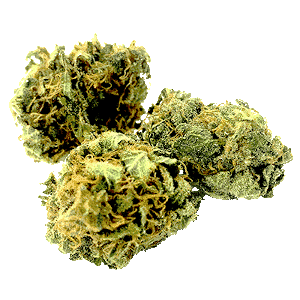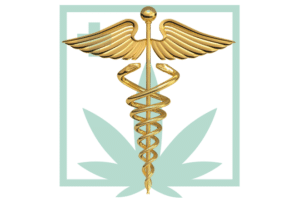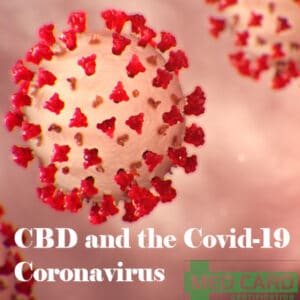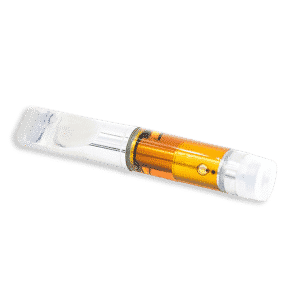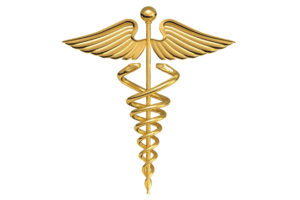
How Does Medical Marijuana Help Treat Cancer?
Cannabis helps cancer treatment? The fact of the matter is that cannabis patients across the globe are finding marijuana and cannabis-infused medicines to be a valuable part of their treatment. Does medical marijuana cure cancer? That’s another matter altogether. However, some of the research in this area shows promise.
By now it’s widely known that many cancer patients are using medical marijuana as part of their treatment plan. In fact, the very first U.S. state to legalize medical marijuana was California way back in 1979. And today, a couple of dozen states now consider cancer to be a qualifying condition for a medical marijuana card. So there’s no question that marijuana offers medicinal benefits to at least some cancer patients.
- How is marijuana used to treat cancer?
- What are the mechanisms by which marijuana produces medicinal effects?
- Does marijuana actually kill cancer cells?
- Is it just used to help manage the symptoms of cancer and the side effects of chemo?
What kinds of medical cannabis/marijuana products are used to treat cancer?
When we discuss medical marijuana, we’re not talking about a candy bowl full of buds and a bong sitting on the coffee table. Well, at least not necessarily.
Medical marijuana has come a long way from the days of joints, bongs, and brownies. Those consumption methods still have their uses. However, today, cancer patients have a multitude of options for not only delivery methods but also formulas.
We have cannabis concentrates tinctures, inhalers, patches, and topical preparations among others. And we have a variety of combinations of various cannabinoids and terpenes. These are the therapeutic compounds produced in cannabis. Each offers different benefits.
Taking a higher-level view of this, marijuana buds are just one product produced from the cannabis plant. Specifically, the term marijuana refers only to the resinous flower clusters of the female cannabis plant and only if they contain THC.
However, there are also strains of cannabis that produce buds that are essentially devoid of THC, collectively known as hemp. So an array of medical cannabis products can be produced aside from marijuana.
While “medical marijuana” was the main medicinal product back in the early days, today, “medical cannabis” is actually the correct term because it includes not only marijuana but hemp and a wide variety of cannabis derivatives.
Today's Cannabis Products

Today, in addition to marijuana, medical cannabis products include:
- Hemp flower (identical to marijuana without the THC)
- Cannabis extracts are used to make tinctures, capsules, edibles, and vape oils with varying levels of THC, CBD, and other cannabinoids as well as strain-specific terpenes
- Cannabis concentrates such as oil, wax, shatter, etc, also with varying levels of cannabinoids and terpenes are highly popular.
- Live rosin, hashish, kief, and other whole-plant products can be smoked, vaporized, or added to food (edibles)
- Cannabinoid-infused tinctures, capsules, and vape oils, pills, and powders made with cannabinoid isolates — that is purified THC, CBD, etc., (as opposed to broad-spectrum cannabis extracts) — and with or without added terpenes.
- Cannabinoid atomizers (inhalers)
- Cannabinoid patches
- Cannabinoid-infused topicals (ointments, creams, balms, etc.)
So, as you can see, we’ve come a long way since the days when pot brownies were considered exotic. Today, cancer patients have a lot of choices when it comes to how they’re going to take their medicine, what’s in it, and what effect it will have on them. Moreover, they can choose very potent and powerful products that are THC-free and do not cause intoxication.
On a side note, did you know that the THC found in raw hemp flowers is non-intoxicating? That’s because it’s actually THCA. In order to convert raw THCA into THC, it must be heated — eg. smoked, vaped, or cooked. There are products that contain THCA that do not cause intoxication. And there are also products such as delta-8-THC (as opposed to the familiar delta-9-THC) which is only slightly more intoxicating and also has a far longer shelf life. The options are practically endless.
How does medical marijuana help cancer patients?
There are potentially three ways medical marijuana can help cancer patients:
- Therapeutic: Marijuana can help relieve the symptoms of cancer and the side effects of treatment. There’s plenty of evidence for this.
- Preventative: Marijuana might help prevent the development or spread of cancerous tumors. There is less evidence for this but it is promising.
- Curative: Marijuana might actually help to bring cancer into remission or eradicate tumors altogether in some cases. Far more research needs to be done to confirm this idea.

How does medical cannabis help relieve the symptoms of cancer?
Various types of cancer produce various symptoms. Symptoms of cancer might include weight loss/wasting, pain, nausea, fatigue, and depression among others. Interestingly, medical cannabis is being widely used to treat all of these symptoms.
How is it possible that one medicine can treat such a wide array of symptoms?
Many of the body’s functions are mediated by chemicals produced in the brain and receptors found on the surface of cells with which these chemicals interact. In a sense, this is how the brain communicates instructions to individual cells.
The particular system which is affected by cannabis is known as the human endocannabinoid system or ECS.
The ECS is responsible for a wide variety of bodily functions such as pain response, inflammation response, immune response, body temperature regulation, appetite, sleep cycles, energy levels, mood, and so forth.
The fact is, our bodies produce their own natural cannabinoids. They’re actually called endocannabinoids. Supplementation with phytocannabinoids — those produced in marijuana — will affect the ECS in a variety of ways. How a body is affected depends on the makeup of the patient’s ECS, plus which cannabinoids are consumed, and at what levels.
The medicinal benefits of various phytocannabinoids such as THC, CBD, CBG, CBN, and so forth, tend to overlap. Certain cannabinoids are more effective at treating particular symptoms. And which does which depends on the patient’s makeup and condition.
For example, while THC might be great for someone with depression because of its uplifting effects, it might make matters worse for patients with anxiety disorders. CBD, on the other hand, helps to reduce anxiety. And while THC might be great at relieving pain in one patient, CBD might be more effective in another.
So each cannabinoid has its own superpowers, so to speak. The only way to know how a patient will be affected is to experiment with different delivery methods and formulas. Patients rarely find the best combination of cannabinoids and terpenes the first time they try medical cannabis products.
How does marijuana help relieve the side effects of chemotherapy and radiation?
Those mentioned above aren’t the only symptoms cancer patients have to endure. The methods used to treat cancer patients can produce serious side effects of their own. Chemo and radiation treatments are extremely hard on the body. As with the disease itself, treatment can cause nausea and vomiting, pain, lack of appetite, fatigue, depression, and so on.
Medical marijuana and other cannabis-based medicines help to relieve these side effects in the very same way that they help relieve the symptoms of the disease — by modulating the patient’s ECS.
Moreover, unlike treatments such as chemo and radiation, cannabis and cannabinoids are non-toxic and are extremely well tolerated by the human body even at high dosages. And unlike opioids cannabinoids are non-habit forming.
That being said, patients with a cancer diagnosis need to use every weapon in their arsenal to ensure the best possible outcome.

Can marijuana cure cancer or kill cancer cells?
Cannabis has been, for all intents and purposes, proven to help relieve the symptoms of cancer and side effects of treatment. However, whether or not marijuana kills cancer cells is another story altogether.
One report of an extensive study on cannabinoids and cancer from the National Institute of Health concludes by saying that:
“There is a strong agreement that pharmacological targeting of the endocannabinoid system is emerging as one of the most promising new methods for reducing the progression of cancer.”
Cancerous cells are cells that have damaged DNA which causes them to multiply out of control. Cannabinoids have been shown to induce a state called apoptosis in cancer cells — that is it causes aggressive breast cancer cells to commit suicide. However, this has so far only been shown to be true in a petri dish.
A team of researchers wanted to found out how cannabinoids kill cancer cells. What they found was that cannabinoids are able to inhibit processes that promote proliferation. The authors in this study concluded:
“Because CBD inhibits Id-1 expression in aggressive breast cancer cells, a rational drug design strategy could be used to potentially create more potent and efficacious analogs. Moreover, reducing Id-1 expression with cannabinoids could also provide a therapeutic strategy for the treatment of additional aggressive cancers …”
Another report published in 2004 in the Journal of Pharmacology and Experimental Medicine also suggested that cannabinoids possess antitumor properties. The results showed that CBD for cancer treatment, in particular, was able to inhibit the growth and spread of tumors both in petri dishes and lab animals.
“For the first time, the CBD can trigger the apoptosis of human gliomas, a very aggressive tumor characterized by poor clinical prognosis and unsatisfactory response to the currently available pharmacological agents.”
So can marijuana cure cancer? Unfortunately, just because it shows promise in a lab doesn’t mean that it will have antitumor effects in humans. That being said, the results so far are very promising.
How is medical marijuana used to treat cancer?
For the most part, cannabis is used systemically. That means it enters the bloodstream — either by inhalation, absorption, or ingestion — and spreads throughout the entire body, including the brain.
It’s the systemic effects that help to relieve symptoms and side effects such as pain, nausea, wasting, and so forth. Because of this, any of the variety of delivery methods mentioned above can be helpful in these respects.
In addition to systemic effects, cannabinoids might have a more potent effect when applied directly to tumors. The most prominent case for this comes from a Canadian man named Rick Simpson who claims to have used cannabis concentrates now known as Rick Simpson oil or RSA to cure skin cancer. Simpson regularly applied his concentrated cannabis extract directly onto a melanoma (skin cancer).
Learn more about Rick Simpson Oil | MedCard
How to Make RSO at Home | NatD
Other ways to deliver cannabinoids directly to tumors might include using an inhaler to treat lung cancer, tinctures to treat mouth cancers, or edibles to treat cancers of the stomach, intestines, and bowel.
Determining which cannabis products are ideal for a patient’s condition can be tricky. As we mentioned, some experimentation is required. Cancer patients should discuss their options with a qualified healthcare provider who is an expert in the use of cannabis in treating cancer. Dispensary employees (budtenders) can also be very supportive in helping patients sort out their options.
Cannabis and its derivatives — including marijuana — are proving to offer cancer patients a natural, safe, and effective herbal supplement that can improve their quality of life and possibly even extend life. While this doesn’t mean that patients should forego other treatments such as chemo and radiation, it can make dealing with cancer treatment much easier for some patients.
VIDEO: Girl, 7, uses medical marijuana for cancer treatment
How To Get Medical Marijuana for Cancer
If you are suffering from Cancer or another health issue and are a resident of a legal state interested in trying medical marijuana for treatment, you will first need to consult with a certified doctor that recommends medical cannabis for treatment.

Sign Up for Medical Cannabis Today!
For potential patients, if you’re ready, we make it easy to connect with a medical marijuana doctor nearby or online. If you are interested in getting certified, please fill out the MMJ patient registration form below and press submit to get started. See if you qualify today!

MedCard Registration Form









